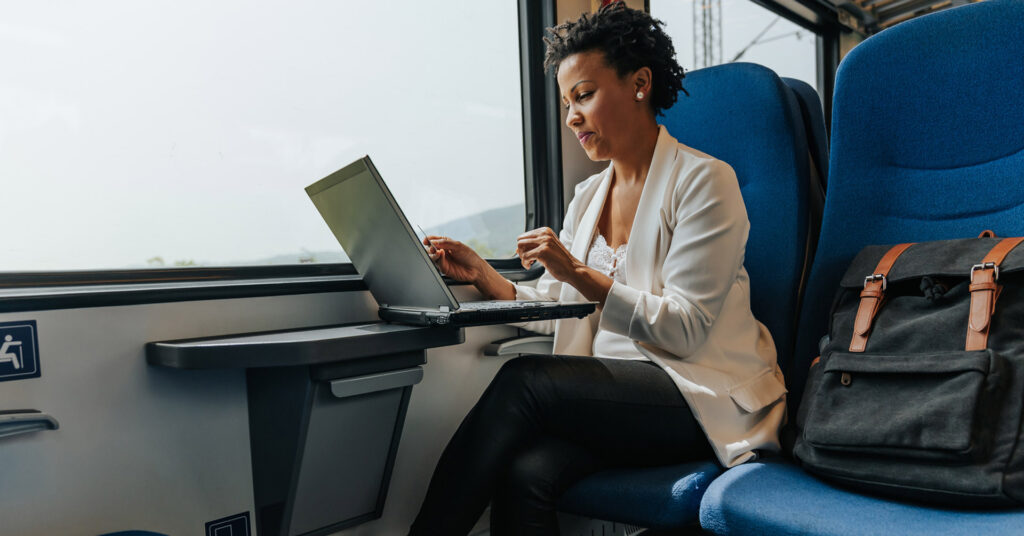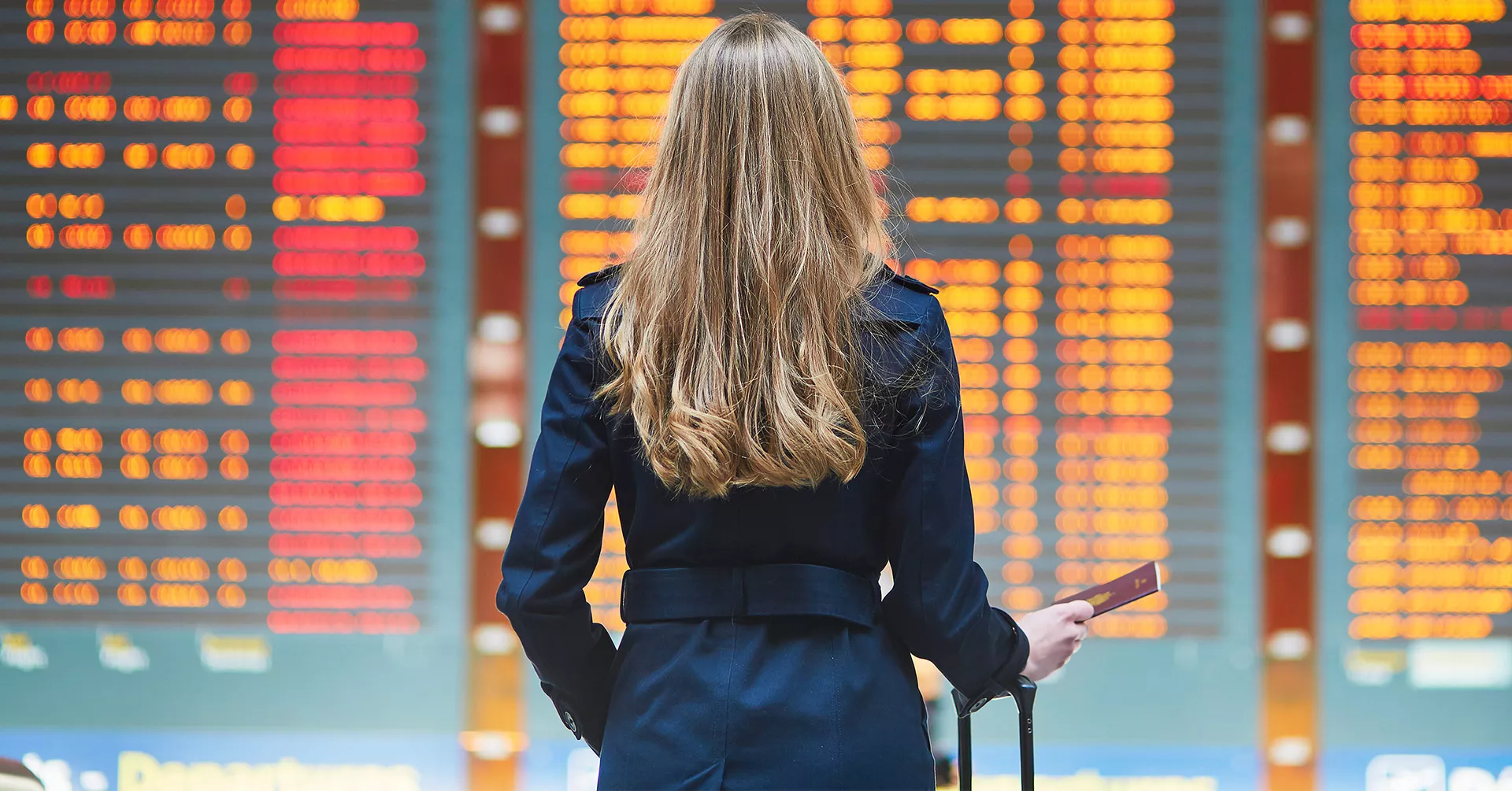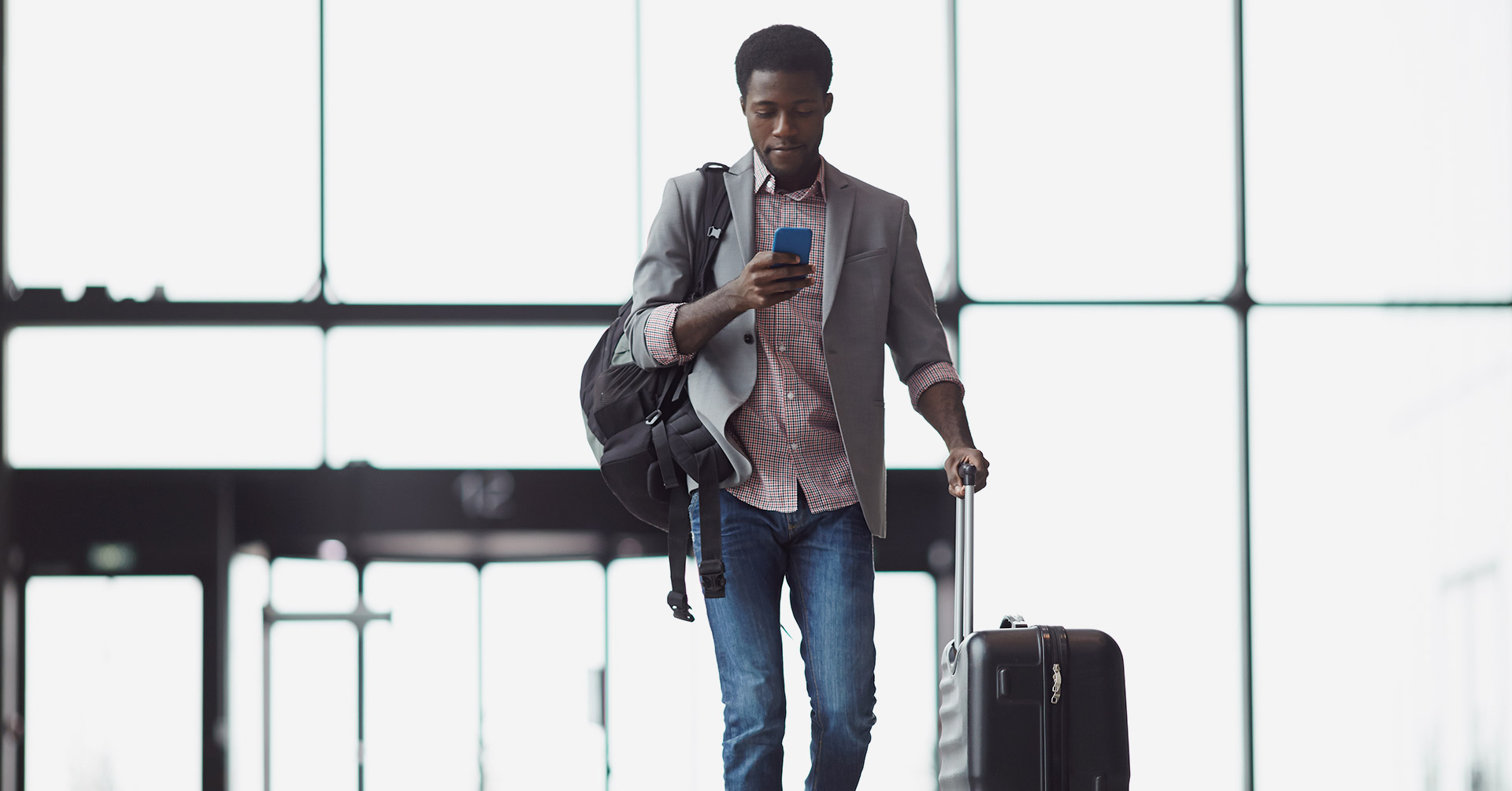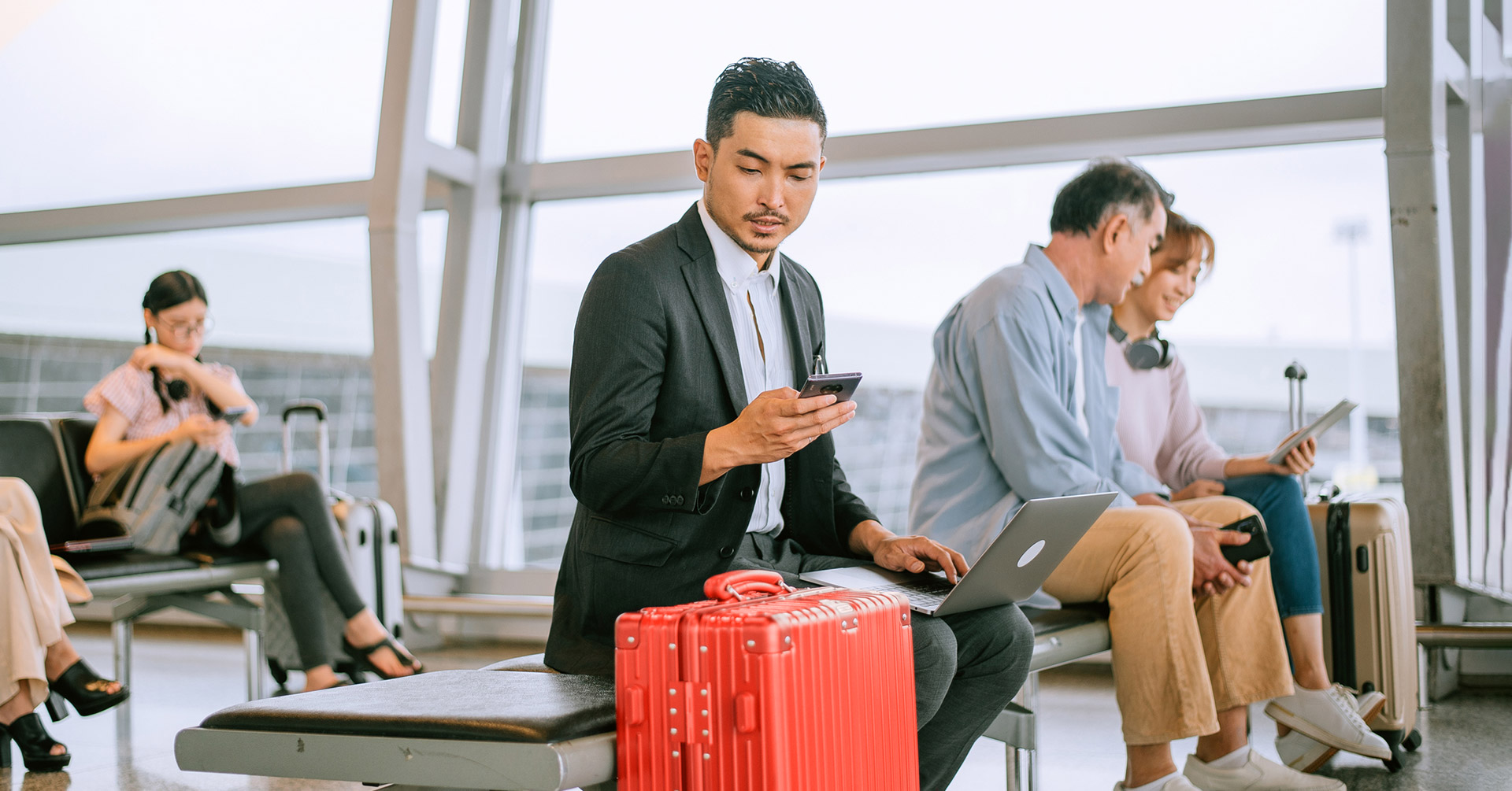
Top 5 Business Travel Trends in 2025
Business travel is back and here to stay. Get a glimpse of 2024’s biggest business travel trends and see how they might impact your itinerant operations in this post.

Business travel is one of the most important forms of work in today’s globalized world. It opens opportunities for networking, expanding markets, and winning deals. But as the landscape of business travel evolves in step with changing trends and safety concerns, staying ahead of the game is more critical than ever. From new technology to contemporary attitudes toward work, business travel is a dynamic and ever-changing concern. And in 2023, the Global Business Travel Association (GBTA) predicts an increase in travel spending and bookings.
In this blog, we’ll delve into the current trends in business travel, with a particular focus on safety, to help you navigate the world of corporate travel and make informed decisions that prioritize the well-being of your employees while driving success for your business. So, fasten your seatbelt, return your tray table to the upright position, and get ready for your voyage into the realm of business travel trends!
Download Our Business Travel Safety Template
The Top 5 Business Travel Trends of 2024
1. Bleisure and workcations
Exploring the world and all it has to offer is one of the best ways to seek happiness and fulfillment, both personally and professionally. But it’s hard to make time to see the sights and explore some of the local culture when your schedule is jam-packed with meetings and other requirements of your itinerary. That’s where “bleisure” travel, also known as a “workcation,” comes in.
Bleisure, as you might have guessed, is a portmanteau of “business” and “leisure.” While the customs officers at the airport might look at you sideways when you say so, traveling for so-called bleisure is nothing new, but it has become even more popular over the past few years and will continue to expand this coming year.
From a post-pandemic point of view, it’s clear that the years of isolation and remote work have modified workers’ and employers’ expectations regarding work/life balance. As many employees were forced to work from home, the once-distinct spheres of work and private life have been blurred; no longer does your physical setting dictate whether you are in “work mode” or not. Globally, people have become proficient in toggling between professional responsibilities, like answering emails and writing reports, to personal ones, like doing laundry and caring for children and other family members.
It makes sense, then, that business travel has taken on a dimension of blended business and personal time as well. And while you might imagine that bleisure travel is solely an indulgence for higher-ups, think again. While executives are the largest group to engage in bleisure travel, managers and entry-level employees comprise 31% and 27% of total bleisure travel, respectively.
What this means for your business
Despite the reasonable perception that integrating leisure travel and work travel could detract from professional tasks and effectiveness, it’s actually a great way to give your employees a unique break during travel, which is famously one of the most stressful parts of working.
Understand that your employees might want to take advantage of the time they spend in new places and engage in some leisure activities. If you give them the time to do so, they’ll be more likely to focus on work when they need to and then return to their normal working schedule refreshed from some nice bleisure traveling.
2. The proliferation of safety technology
Even though the business travel industry is seeing a global comeback now that COVID concerns are diminished, the world hasn’t made itself any safer for travelers. In fact, the UN has called the current period a “new age of conflict and violence.” While violence between nation-states has decreased dramatically since the conclusion of World War II (notwithstanding Russia’s invasion of Ukraine), interpersonal homicide is on the rise, as are attacks on women, LGBTQ people, and children. This adds up to a more dangerous and worrying travel landscape, and employees gearing up for work trips might experience increased stress.
But the proactive safety measures haven’t been dormant, either. Over the past few years, new technology has emerged that empowers safety leaders to provide more support to their domestic and international travelers, no matter where they are. These solutions are part of a class of software known as travel risk management. They help monitor employees and their itineraries, making it easier to keep tabs on many travelers at once while simultaneously tracking emerging threats that might put them at risk. Leading travel safety management software also provides a well-integrated communication system so you can keep in touch with your travelers and inform them of any risks, as well as allow those same travelers to request assistance or ask questions.

And while these tools have quickly become indispensable in the corporate travel world, 41% of business travelers surveyed for our 2023 Employee Safety Report say their employer has never informed them of potential safety risks at their destination. There is clearly a gap between the potential of these solutions and the adoption of travel safety programs, which is why we’re certain we’ll see an increase in the use of travel safety management software.
What this means for your business
According to our own Employee Safety Report, business travelers are becoming more aware of the problems they might face while in another city or country—and are less willing to travel unless they’re confident those concerns have been addressed. As the world continues to become more violent and tumultuous, it will be incumbent on all employers to use every tool available to ensure the safety of their corporate travelers. You’ll want to ensure you have a reliable way to communicate with your traveling employees though multiple channels such as text, email, WhatsApp, and more in order to keep them informed of potential risks or critical information.
3. Hub travel
In the post-COVID world, the dynamics of work locations have been turned on their head. Traditionally, most office workers would commute to the office, complete their daily work, and then head home for the evening. But now, remote working is much more common and widely accepted than it once was in the professional realm. While it remains a controversial topic, it’s become increasingly clear that remote working has myriad benefits, including increased productivity and decreased stress.
Companies from Adobe to Allstate are reducing their office real estate holdings and are focusing on remote work over in-person commuting. That’s not to say that they’re strictly remote only; virtual meetings can get you only so far. They’ll gather, as Adobe puts it, for the “moments that matter”—that is, for occasions that call for in-person collaboration and face-to-face camaraderie.
When Adobe or any other company feels the need to convene their employees at an office, they’re going to face a challenging organizational problem when trying to coordinate one-off travel arrangements for a group of employees who might be scattered to the wind due to the flexible remote-work policy. As these new work trends continue, it’s likely we’ll see more of this remote-to-hub travel from companies around the world.
What this means for your business
Depending on your business’s industry, you might have a number of remote workers stationed around the world. But as Adobe points out, it’s important to get some face time between coworkers every once in a while, to strengthen morale and social cohesion. But trying to coordinate simultaneous travel among so many workers might prove to be a challenge without the right tools.
4. Self-booking
Since the 90’s and the rise of online travel booking, the number of travel agencies worldwide has dwindled, and business travel contributes to this trend. Most travelers these days are comfortable making their own arrangements for flights and accommodations on the internet, and that extends to business trips. Many are now using corporate travel booking tools (CTB) that help automate this process and allow a level of self-service to employees.
Using these systems from various providers, employers can set parameters restricting the types of flights that workers are allowed to take based on criteria such as price, connections, airline, and more, so when an employee selects their own flights, they’ll meet company travel policy. This allows much more freedom and flexibility for corporate travelers, and even gives them more of an opportunity for a workcation, should they have time. Of course, some employees may prefer not to be responsible for booking their own flights and other travel arrangements.
What this means for your business
If you aren’t already using a corporate travel booking tool, you should consider adding one to your travel budget as it can take a lot of strain off your travel management team. It allows you to spread responsibilities around to your traveling employees if it works for your company.
5. Environmental sustainability
Human-caused climate change’s disastrous effects on our planet are undeniable. Our planet is getting warmer, making hot areas less habitable. As a direct result, severe weather events like hurricanes and tornadoes are becoming more common, more deadly, and less predictable. People in coastal areas around the globe are at risk of being displaced, and ecologies worldwide are under threat.
It’s understandable, then, that many employees are concerned about the environmental impact of their travel. Because of these employees, sustainable travel is likely to be one of the biggest travel trends of 2024.
New tools have emerged that allow employees to calculate the estimated carbon emissions of flights so they can choose one with the smallest impact.
There are even policies and programs known as carbon offsets which seek to mitigate the environmental harm caused by business travel (or any other carbon-emitting activity) by supporting initiatives such as forest replanting, green energy production, and carbon capture. For the eco-conscious, while business travel might be inevitable, it doesn’t have to be dirty.
What this means for your business
Climate change used to be seen solely as the purview of governments and major polluters like energy and shipping companies, but it’s now often seen as a global responsibility. Since air travel is one of the most polluting activities that average people engage in, it’s wise to give your employees options to reduce their carbon footprint so you can help fight back against climate change together. Otherwise, they might seek opportunities elsewhere that give them that eco-friendly flexibility.
Staying Trendy
The above trends aren’t just popular fads destined to fall by the wayside; they’re evolutions in the way employees and employers are thinking about business travel. And following them isn’t a wasteful pursuit of ephemeral values; it’s a way to get ahead of the competition and start thinking about travel in a new way.




